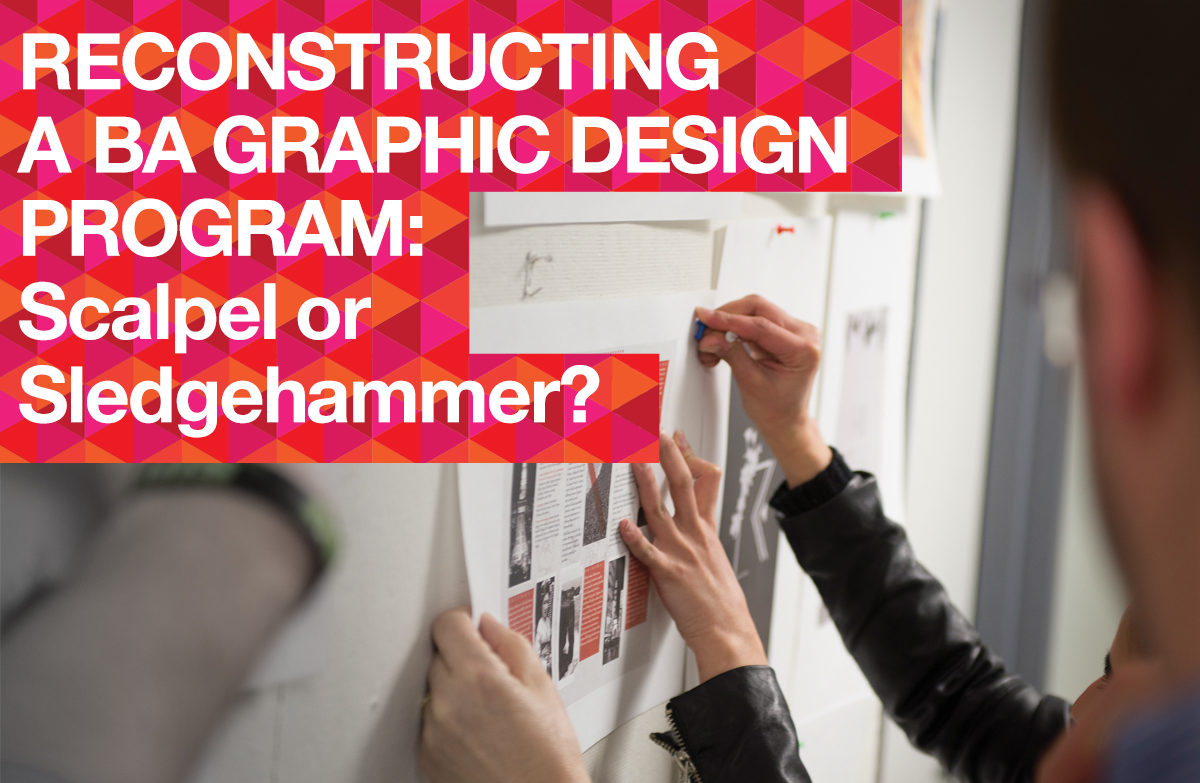Nancy Wynn
Associate Professor
Merrimack College
In the fall of 2015, as the new faculty member at Merrimack College, I was thrust into this position. A cold dose of reality hit—my senior students’ work was, sadly, a mess. It was clear the design program needed to be rebuilt and renamed. Acting fast became necessary, because moving slowly would continue the problem. Both scalpel and sledgehammer were required (along with lots of coffee) delivering a newly redesigned BA Graphic Design program for approval and implementation by fall 2016. The program bridged both design thinking and making with the skill set of a Liberal Arts education.
The analysis started with the NASAD/AIGA analytical and consultative briefing papers. They were a good starting point, but they did not answer the question of how to build an expanded BA model responsibly? How elastic is the BA model? What beneficial Liberal Arts skills could be integrated into a graphic design student’s education? How could avenues be created for various types of students to be successful? And, where and how should professional engagement enter into the program?
This story begins by sharing methods for responsibly creating a “hybrid” BA model, keeping students’ best interests in mind, and honoring the industry’s professional standards. Topics to be shared include evaluating existing majors and minors; partnering with other majors and departments; which courses to keep vs. which should be thrown out; setting sizable goals for a 4-year BA graphic design program; ideas on future learning spaces and technology; and, understanding what is valuable in a 21st century graphic design education as the industry continues to evolve.
This research was presented at the Design Incubation Colloquium 4.0: SUNY New Paltz on September 9, 2017.
